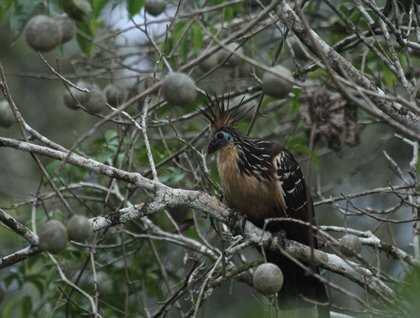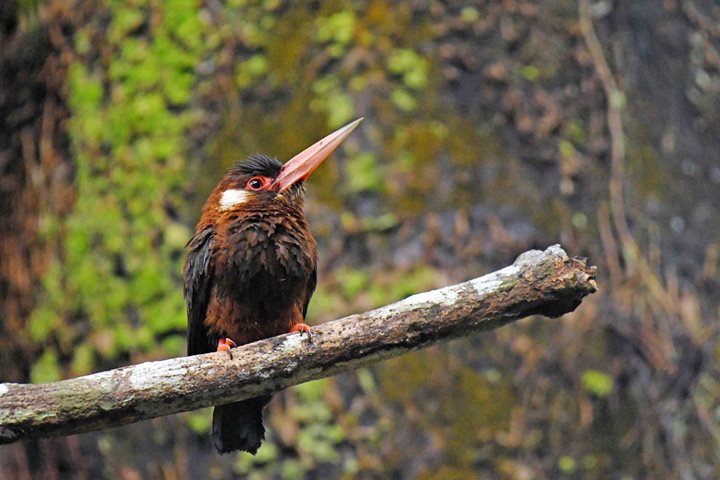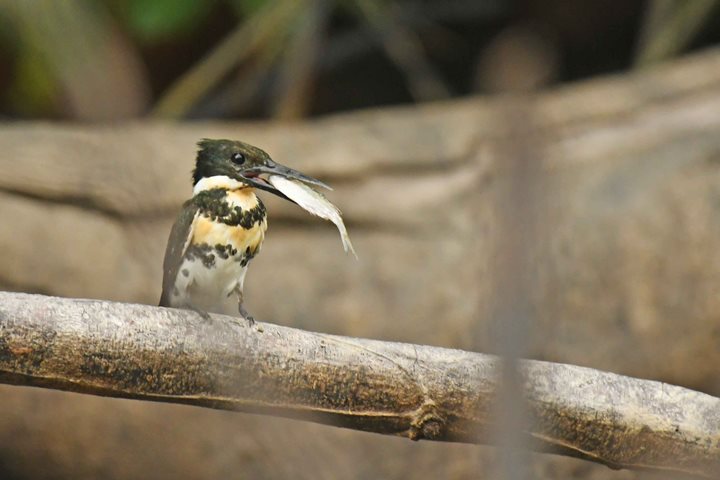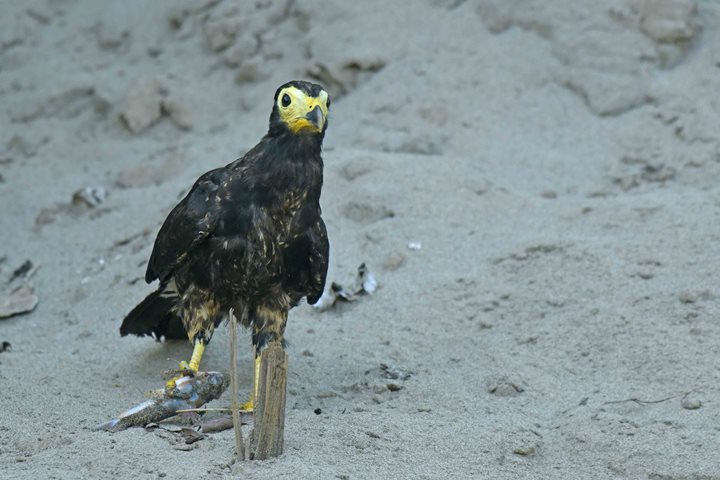Who wouldn’t love to see a macaw in the wild? We all would like to, and that was our plan for this morning. Up at 6 and out by 6:30, we were on the search for scarlet macaws and blue and yellow macaws amongst the dead palm trees. Their chatter of squawks gave away their locations, as well as their primary blazing colors. Three pairs of blue and yellow macaws did a series of early morning acrobatics for us, hanging upside-down with wings spread, hanging by one foot and squawking the entire time. It was a delightful way to start our day. We continued our explorations down the river and then up a small creek. Our sightings included laughing falcons, peregrine falcon, black-tailed tityra, and plum-throated cotinga. Black-crowned night-herons were found, as they had not yet found their roost to pass the heat of the day.
Our afternoon outing was up the Rio Dorado, and our plan was to stay out past sunset and experience the rotation from daytime inhabitants and their associated symphony, to the nighttime denizens and their accompanying cacophony. Horned screamers were sighted and their pulsing, donkey–like brays echoed through the forest. The rasping, cough-like sound of a group of hoatzins caught our attention. It takes a fine-tuned ear, as our local naturalists have developed, to recognize the species of bird you are looking for by the sounds surrounding you. In addition to the various bird species, a group of monk saki monkeys were found, as well as a small group of squirrel monkeys climbing high into a tree to rest for the night.
As night fell, we used a light to help us find the eye shine of spectacled caiman. We found a number of smaller individuals amongst the riverside vegetation. Fishing bats were periodically spotlighted as they cruised the calm waters of the Rio Dorado. Before returning to the ship, we stopped our boats in the middle of the river and shut off the engines. This allowed us to immerse ourselves in the natural sounds of the Amazonian tropical rainforest, truly a special treat to end a full day.







